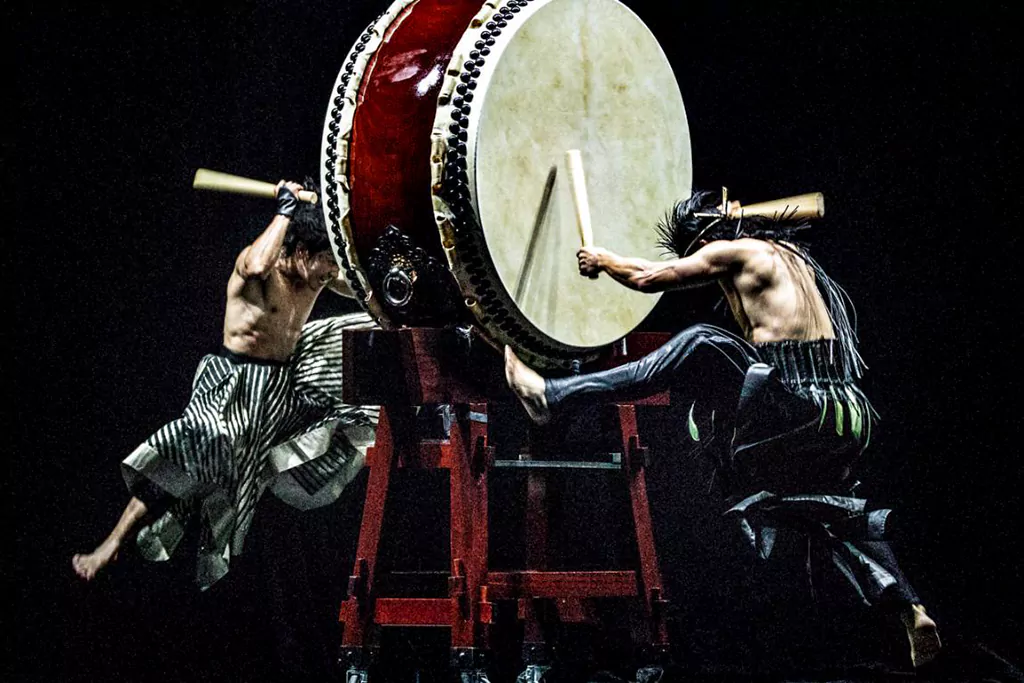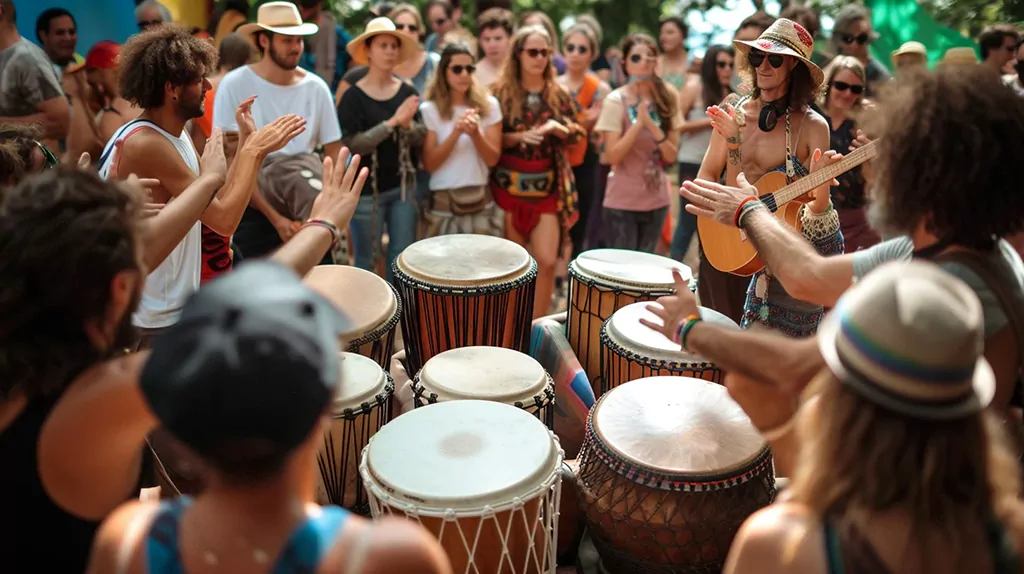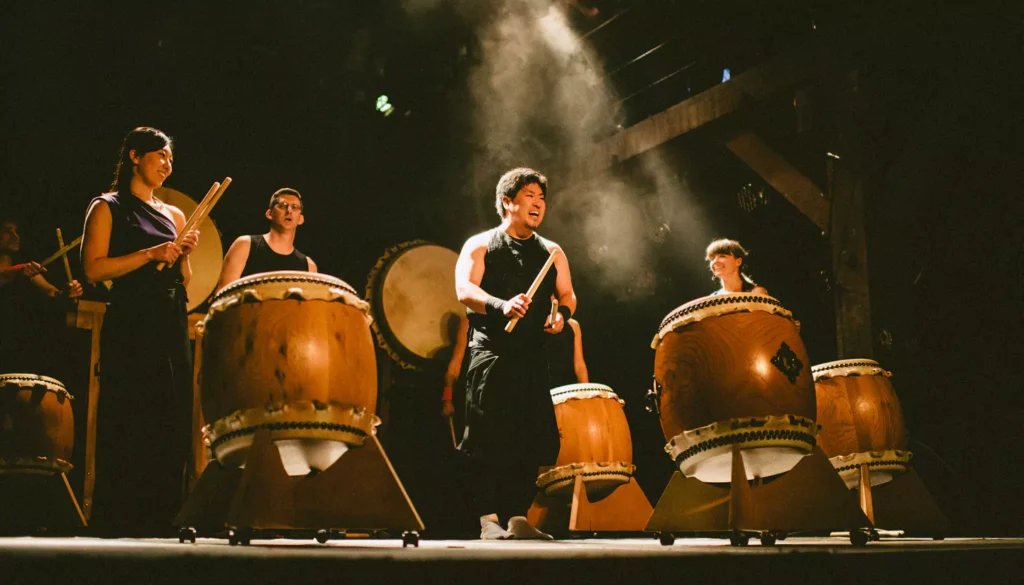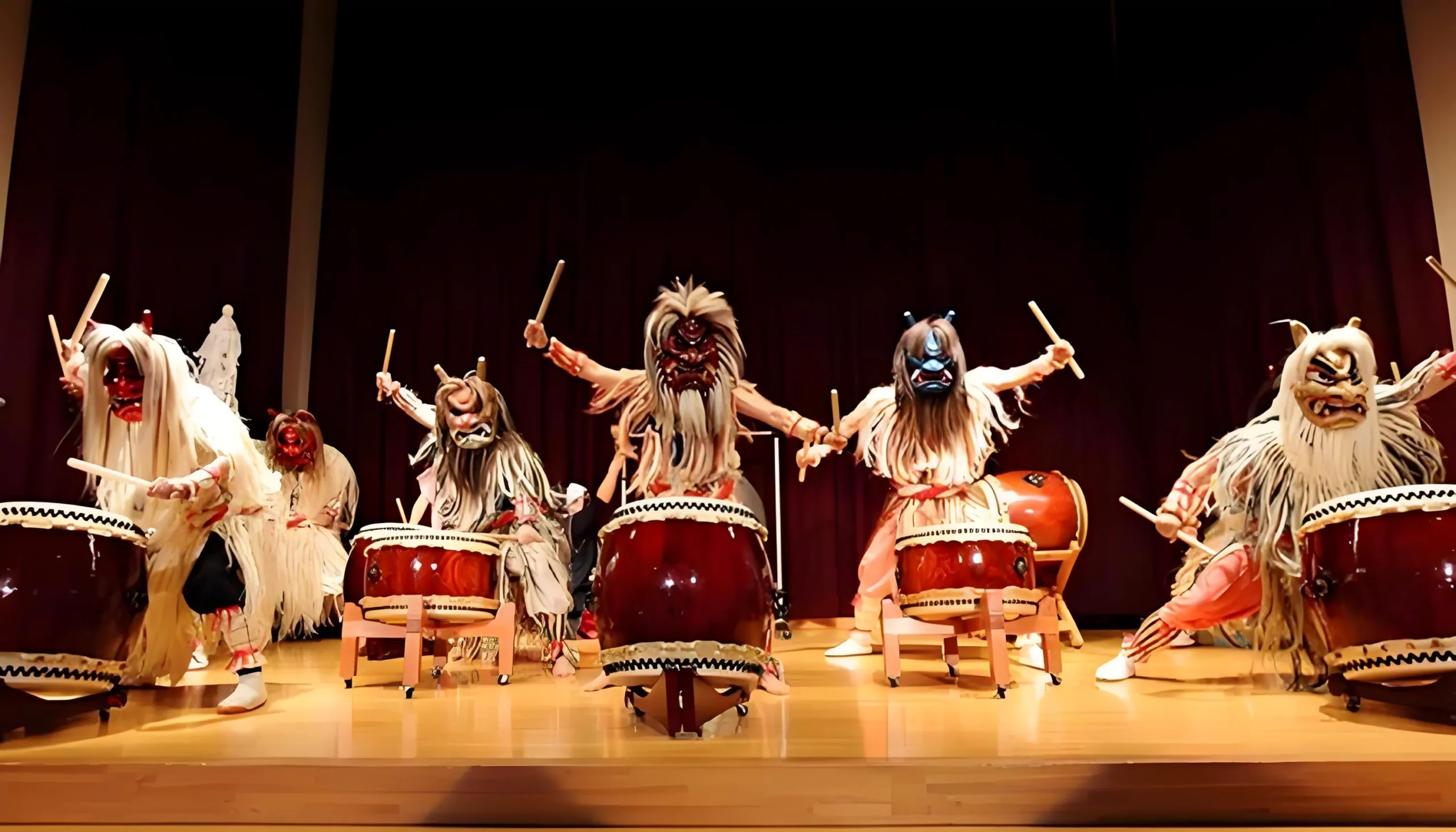For several decades now the violent, rhythmic force of taiko drumming has converged with the expressive movements of contemporary dance to create a vital and interesting artistic exchange. This out-of-the-box collaboration combines the rhythmic precision of Mannheim Steamroller meet the vitality and precision of the Chip Davis production with the innovative creativity of the Touhill’s contemporary choreographers resulting in a production that has become increasingly more innovative and mesmerizing to audiences throughout the world. This paper examines groundbreaking work in taiko and contemporary dance, considering the interplay between the two disciplines and the new artistic languages that result from an ongoing fusion.
Understanding Taiko and Contemporary Dance

Taiko Drumming: Deeply rooted in Asia culture, taiko is characterized by powerful, rhythmically complex percussion. It typically represents cultural heritage, spiritual expression and community festivity. Their marks are products of their bodies, and they sell the body to which they belong. Taiko is loud, visceral, and in-your-face, appealing to people as much for its corporeal precision as for the way the skin of the drum resonates into their bodies.
Contemporary Dance: Characterized by fluidity, expression, and creativity, contemporary dance combines elements of various genres of dance and focuses on improvisation, self-expression, storytelling, and emotion. It consistently blurs the boundaries and welcomes interdisciplinarity.
TAIKO-EX DANCE: Reuniting the Beat and Dance and the Ha: The breath of Japan The Rise of Taiko and Dance Fusion
The works involving taiko and contemporary dance became particularly pronounced in the latter half of the 20th century and through the 21st century—due largely to international cultural exchange and the growing interest in creative performance opportunities. Pioneers aimed to push the boundaries of how the rhythmic rigor of taiko could heighten the narrative expressiveness of contemporary dance, as well as how contemporary dance could elevate the visual and emotional scope of a taiko performance.
Notable Works and Performances
‘Tao: Drum Heart’ by TAO Drum Art All of us live in a world with rhythm, but we are not all rhythmically inclined — at least not to the extent of this group of Japanese drummers.

TAO A celebrated Japanese company that mixes taiko drumming in with tightly-choreographed modern dance numbers. “Drum Heart” is quintessential of their work, sharing stories with emotional charge using rhythmic patterns and dynamic corporal movements. The performers effortlessly move between dynamic drums to dance, and the juxtaposition allows for an achingly beautiful balance of the two disciplines.
Kodo One Earth Tour Kodo Ensemble
Kodo Ensemble is internationally acclaimed for combining modern dance with the ancient art of taiko. “One Earth Tour” fuses athletic choreography and drumming unison, focusing on human bonding, ecological consciousness and community harmony. Contemporary dance takes the physicality of taiko to the extreme, enhancing the emotional impact and pulse-pounding appeal of the experience.
“Pounding Waves” by TAIKOPROJECT
The TAIKOPROJECT, based in the U.S., is known for their inventive combination of traditional Japanese drumming and modern Western dance. Their piece “Pounding Wave” examines the encounter of rhythmic drumming and fluid, contemporary dance choreography to communicate cultural conversation and artistic creativity. Dancers personify cadence with complex steps that emphasize the sound’s vitality, and its thematic heft.
Artistic and Technical Fusion Strategies
Rhythm as Choreographic Inspiration
As rhythm is the formative essence of taiko, it causes powerful effects in choreography of new dance. The dance often reflects the rhythm as the body becomes one with the soundscape. Choreographers exploit the repetitive rhythms of taiko to build their dances, and to let dancers become visual and kinetic sound.
Physicality and Athleticism
Both taiko and contemporary dance are athletic arts, which require a levels of fitness and precision. This common corporeality facilitates mutual enrichment: dancers borrow from taiko movement styles to accentuate power and groundedness, while drummers weave in contemporary dance’s fluidity and range, generating a tapestry of movement.

Emotional and Narrative Integration
The rhythmistic power of Taiko meets the narrative expression of contemporary dance. Dance stories frequently echo the mood and feeling of the drumming, and taiko rhythms support and accentuate the emotional aspect of the dance. Here, struggle, joy, adversity, harmony even, all come alive in pronounced detail through this amalgamation.
Reciprocal Influences and Innovations
Influence on Taiko Drumming
From contemporary dance, taiko players have been drawn closer to more expressiveness. The old style of doing performance as a defined piece has given way to a fluid, interpretive, and improvisational structure. This openness and emotional development provides the potential for more expansive interpretations in taiko performance.
Influence on Contemporary Dance
The severe rhythmical sound of taiko drums has been the source of contemporary dancers’ precise rhythmical dance of high sensitivity and musicality. Rhythm becomes so poignantly particular in the choreography that it is given physical form and becomes a visual story.
Educational and Cultural Implications

The blending of taiko with modern dance opening an array ofeducationalopportunities, such as building an understanding between cultures, learning a sense of rhythm, physical discipline, and artistic creation. Workshops and collaboration frequently focus on mutual respect and cultural exchange, strengthening the global arts community.
Challenges in Fusion
Maintaining Authenticity
Bringing taiko and contemporary dance together meant negotiating the space between the new and the true, at least when it came to culture. Dancers and choreographers need to navigate the line between the respect of tradition and creative liberty. Successful partnerships often consult cultural experts to make responsible and informed artistic decisions.
Technical and Logistical Demands
Logistical obstacles to combined taiko and dance performances include scheduling rehearsals to accommodate both art forms; finding ways to control acoustic dynamics; and making accommodations for space. Fusion performance: Planning and preparationPlanning and synchronisation of the technical aspects of performance and an adaptive rehearsal process are key aspects of a successful fusion performance.
Case Studies of Innovative Fusion
Case Study: The Collaboration between Kodo and Akram Khan
Kodo was joined by internationally renowned contemporary choreographer Akram Khan to create a harmonious hybrid that fused taiko with Khan’s contemporary dance signature. Through rhythmic and choreographic dialogue, they used their joint work to bridge cultural distances, emphasizing universal human emotion. The dancing was also notable for its experiments in rhythm and movement, showing how these collaborations paved the way to creative breakthroughs.
6.7 Example for YAMATO -the Drummers of Japan
YAMATO’s performances have transcended cultural boundaries, combined modern, expressive choreography with traditional taiko, and they are acclaimed as an exhilarating and youthful group with vitality, rhythm and originality. The team’s creative spirit beautifully underlines how to seamlessly blend the lightning-fast visual and rhythmic transitions whilst strengthening the coherence of between synesthezic scenes.

Future Directions in Taiko-Dance Fusion
The groundbreaking integration of taiko with modern dance has much room to expand and explore. In the future the development, or convergence, of digital media, interactive technology, and multidisciplinary practice, may be accommodated as a constel·lation of elements of various expressive possibilities, or as theses or projects may even farther expand the expressive possibilities inherent in the cross-fertilization. The worldwide scope of these productions is also bound to encourage more meaningful cross-cultural conversation and greater international cooperation.
Conclusion
The combination of taiko drum performance and modern contemporary dance emerges as a dynamic and growing artistic space. Merging the perfect interplay between rhythm and emotion, artists have developed new performance formats that captive and move the entire world. This continued development holds the hope of continued artistic progression, new interpretive vision and new depth to both taiko and contemporary dance traditions.



